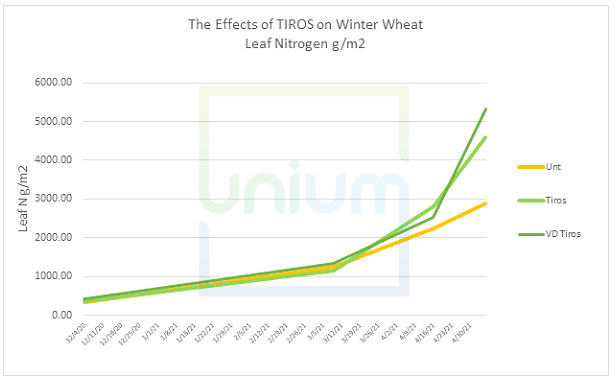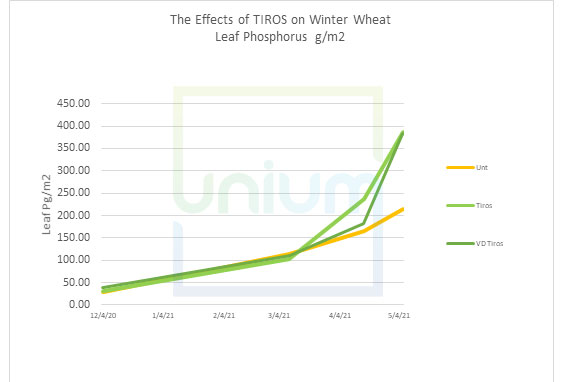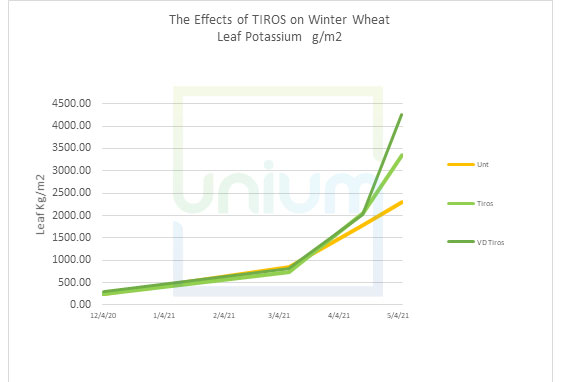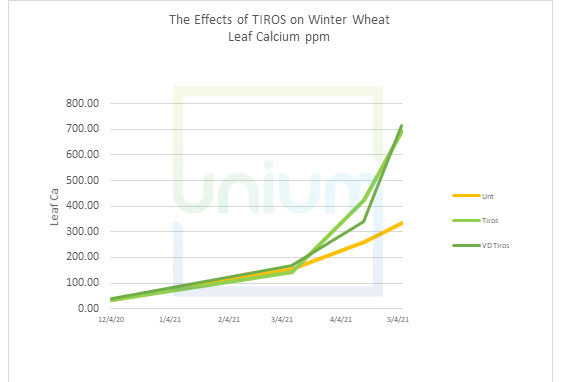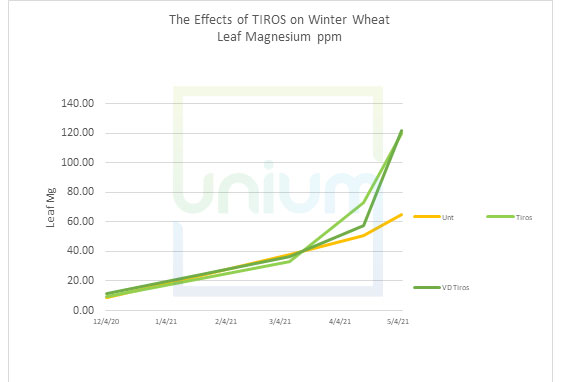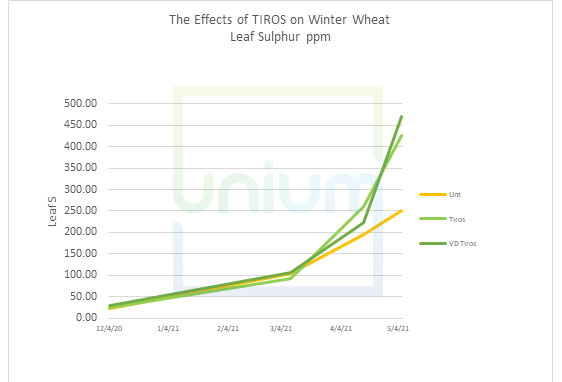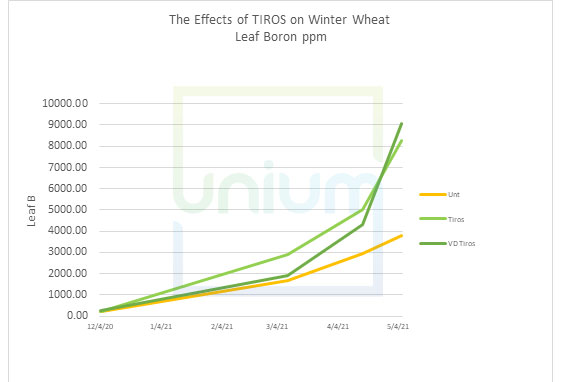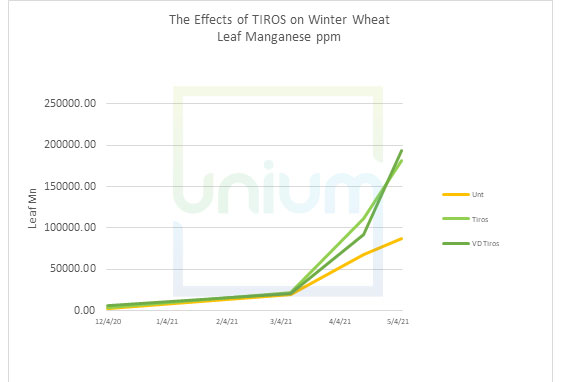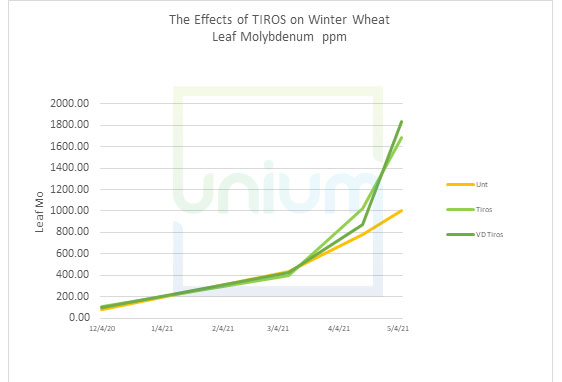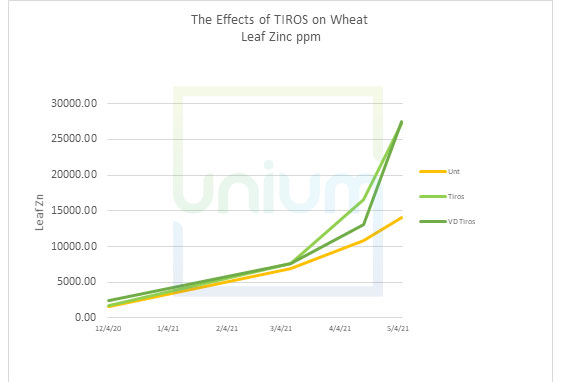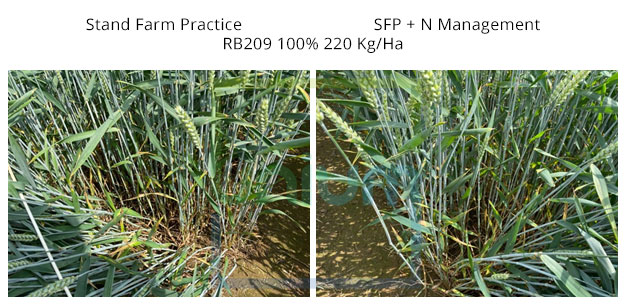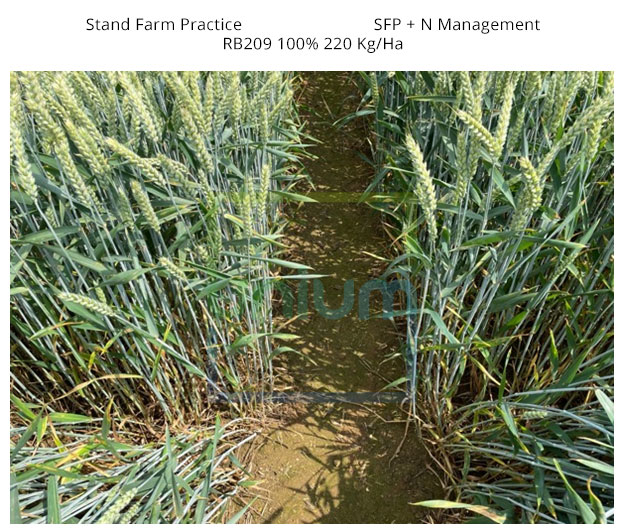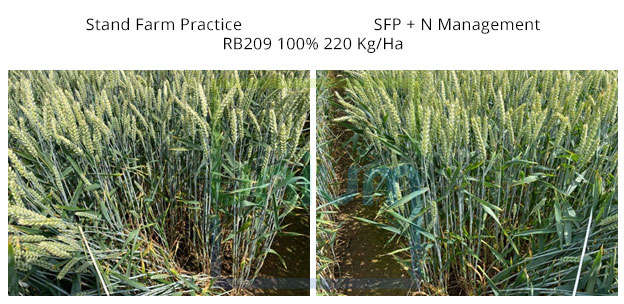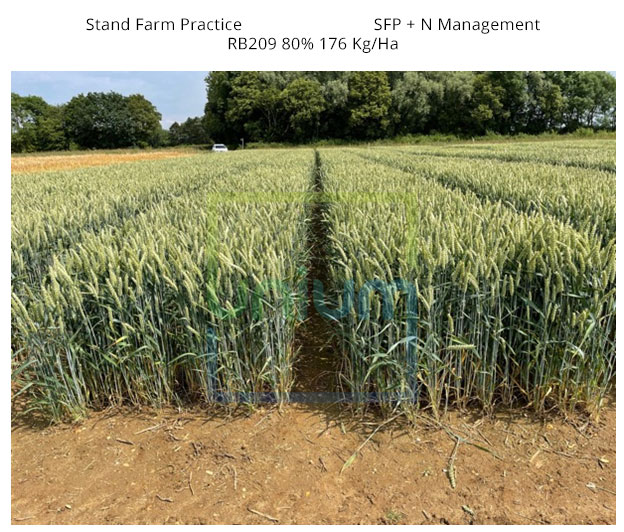As harvest continues, albeit later than normal and in its usual stop start fashion, we would like to report on our first trial which we have carefully followed throughout the year.
Many pictures have been taken showing the improved establishment during the autumn and early spring, with matching biomass figures, but this is the first independent trial report in 2021.
| Location: | Stubton, Nottinghamshire |
| Soil Type: | Sandy Loam |
| Previous Crop: | Winter Oilseed Rape |
| Drill Date: | 14th October 2020 |
| Variety: | Coded |
| Nitrogen Regime: |
100% RB209 = 220kgN/ha
80% RB209 = 176kgN/ha
30:50:20 split
|
| Seed treatments: |
Untreated
Tiros
Tiros + Vibrance Duo
|
Initially, establishment data was recorded, showing an enhanced plant stand.
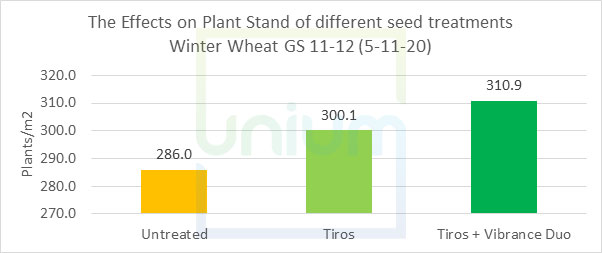
The increased biomass of both the roots and shoots was evident in both the biological endophytes and the fungicide ST Vibrance treatments.
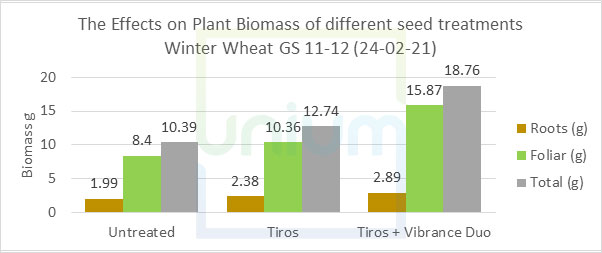
This biomass difference followed through even when different nitrogen regimes were overlayed onto the plots – with 80% N with Tiros outperforming 100% N throughout the trial.
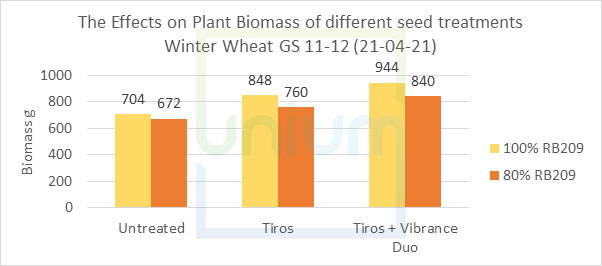
Independent Conclusion on 21st April 2021
- Improved root structure and crop establishment with Tiros
- Roots and crop establishment improved further with addition of Vibrance Duo
- Tiros in the RB209 80% Regime currently outperforming the untreated RB209 100% regime
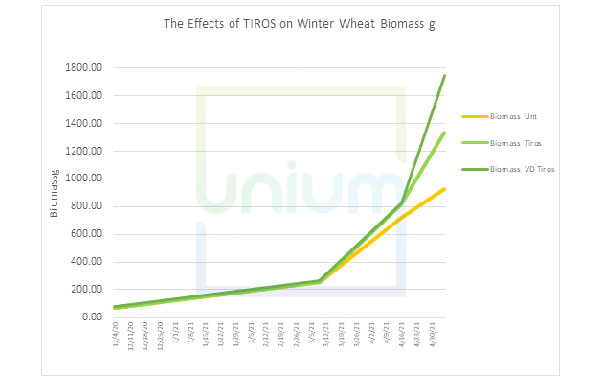
The nutrient uptake curves are below, with data from the start of monitoring in December and every month for the next 6 months.
We know that the two endophyte strains are particularly selected for their efficiency in fixing atmospheric nitrogen and solubilising phosphorus, not only in the soil to increase availability but also within the roots to ensure it can be transported within the plant to areas of need.
Plants will always aim to maintain nutrient balance, so as uptake of some of the elements increases (N & P targeted in this case), we can see that others also follow the same trend. These endophytes also play a role in the biological mediation of these other elements, e.g. K, and trace elements, to maintain this nutritional stoichiometry.
The enhanced biomass is not coming at a cost of nutrient dilution as the respective element density is retained, so there are no weaknesses created.
Better nutritional management, especially nitrogen, has many implications and one of those is the impact on attractiveness to pathogens. The photos below are a perfect example of that in the expression of Septoria.
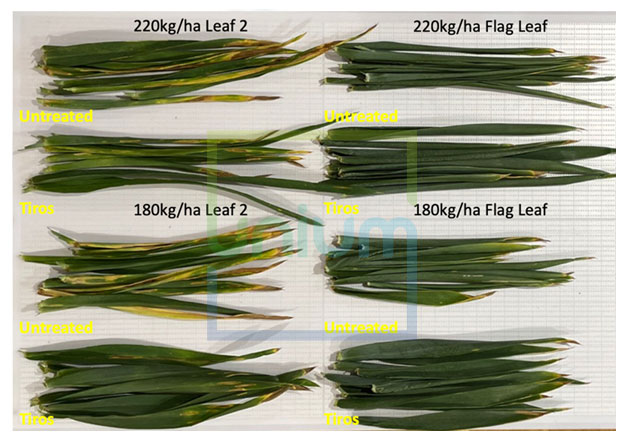
Overall, just looking at the 220 vs 180 Kg N/Ha rates (irrespective of seed treatment), there was a reduction of 50% in Septoria levels, clearly showing not only the amount of N but the assimilation rate of that N is critical to support an integrated disease management approach.
This is at the heart of the Nitrogen Use Efficiency Programme we are developing; linking biology, fertiliser choice and efficiency along with plant metabolites to enhance assimilation.
We look forward to sharing that work when the report arrives.
Back to our Case Study
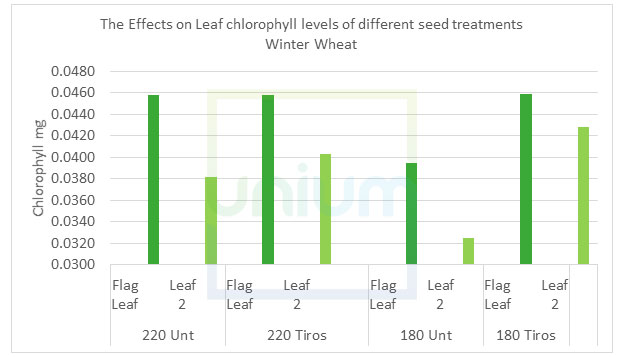
The chlorophyll differences are not often noticed in early assessments on the flag leaf as nutrient resources are translocated from the lower leaves, but it can be clearly seen that there are more nutrient resources in the Tiros treated plots at both rates of Nitrogen by the fact less has been moved to the flag leaf – this will maintain green leaf area for longer giving the increase in yield.
As we saw last year, the Tiros treated crops produce larger flag leaves and this season was no different. So when you combine leaf size and chlorophyll levels, you can see that the photosynthetic “factory” is larger in the Tiros treated plants – which with increased green leaf retention should allow the crop to achieve closer to its optimal performance.
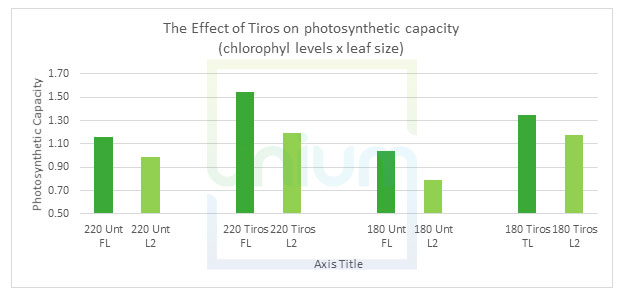
So, as we are always asked, what is the difference in yield?
OK, so you can see an incredible increase of 0.54 t/ha even on the RB209 100% plot and a respectable 0.35 t/ha on the RB209 80% Nitrogen plot.
The 80% N rate + Tiros is nearly the same as 100% N or you could say that Tiros equates to around 45 Kg/Ha of N.
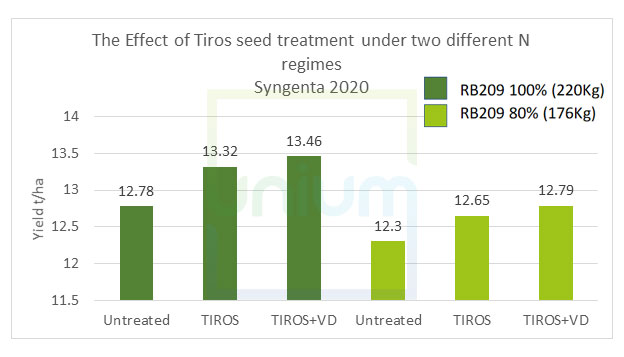
The benefits of Tiros across the two Nitrogen regimes is as follows:
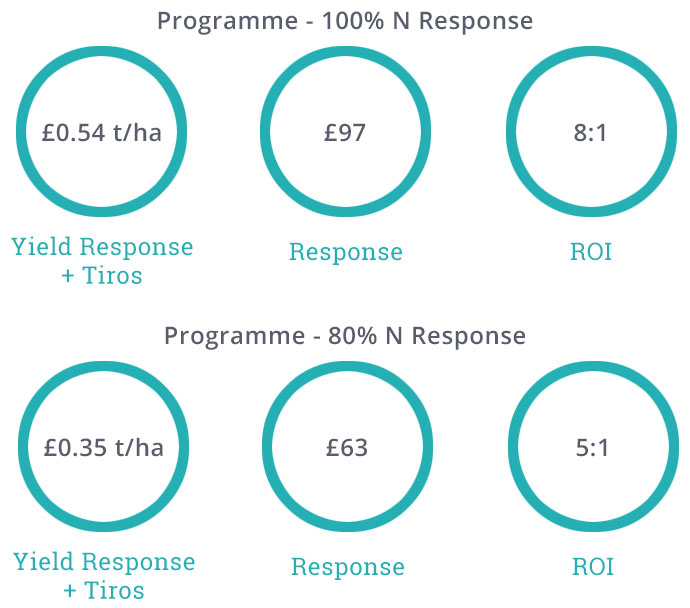
Can Tiros replace the final 20% of applied N at a lower cost than the cost of the fertiliser?
Can it be further improved with Twoxo at key applications?
Will coating the N fertiliser with a polymer increase nutrient use efficiency?
Will switching to foliar N increase efficiency further when a nutrient use enhancer is added?
Will improved nutrient balance and assimilation support a more efficient disease control programme?
Will enhanced N assimilation reduce the lodging risk?
Are there other factors we need to consider?
Once all the data is in, we will have the answers to some or maybe all of these questions. How then to integrate them cost effectively is the next challenge – building them into a unique nutrient use efficiency programme.
We look forward to sharing this exciting project as more data comes in. The results clearly illustrate the reliability of the data behind the biological endophytes in TIROS and then the potential of how N regimes can be adjusted.
If you still have seed choices to make we hope you will consider Tiros as part of your 2021-22 growing season.


